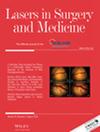Study on the Synergistic Mechanism of Photodynamic Therapy Combined With Ferroptosis Inducer to Induce Ferroptosis in Cholangiocarcinoma
Abstract
Background
Photodynamic therapy (PDT) induced lipid peroxidation reaction can lead to necrosis and apoptosis of extrahepatic cholangiocarcinoma (ECC) cells, reducing the tumor load. However, the depth of action of PDT is shallow, and its therapy efficacy is weak, making it difficult to achieve eradication even with multiple treatments.
Objectives
This study aims to investigate the mechanism and main pathways of ferroptosis in cholangiocarcinoma under Hematoporphyrin-mediated photodynamic therapy, and to compare the effects of different ferroptosis inducers on photodynamic therapy-induced ferroptosis in cholangiocarcinoma. To provide an experimental basis for selecting appropriate ferroptosis-inducing agents and synergizing with photodynamic therapy during the clinical perioperative period.
Methods
The Cell Counting Kit-8 (CCK-8) was used to examine the cytotoxicity of cholangiocarcinoma cells following PDT. Flow cytometry was used to detect apoptotic cell percentage and cell cycle changes to assess the enhanced photodynamic production of reactive oxygen species (ROS) by different ferroptosis inducers, confocal imaging was used to de-assay ROS content. Western blot analysis was employed to detect the expression of GPX4 、FSP1、ASCL4 and SLC7A11. Furthermore, a fluorescence spectrophotometric assay was used to quantify the alterations in lipid peroxides (MDA, LPO, GSH, and Fe2+).
Results
The combination of PDT with Lenvatinib or Erastin resulted in increased ROS levels, and decreased GSH content, tumor cells were inhibited in the G2 phase, and the proportion of apoptotic cells increased. Additionally, GPX4, FSP1, and SLC7A11 protein expression decreased, whereas ASCL4 increased This was accompanied by heightened levels of Fe2+, LPO, and MDA. Induction of the ferroptosis pathway was observed to enhance the therapeutic efficacy of PDT.
Conclusion
Our findings suggest that Erastin or Lenvatinib can enhance the induction of ferroptosis in cholangiocarcinoma cells by photodynamic therapy by increasing intracellular ROS and inhibiting intracellular antioxidant pathways.

 求助内容:
求助内容: 应助结果提醒方式:
应助结果提醒方式:


